Making delicious gluten free yeast breads isn’t difficult, it just seems like it ought to be. In fact, in many ways gluten free bread baking is easier and quicker than it is to bake a traditional bread with gluten.
Using the right recipe and the best gluten free ingredients, you don’t even need a loaf pan! Follow my gluten free bread help check list, and these 18 Tips for Gluten Free Bread Baking will bring you delicious gluten free bread baking success!
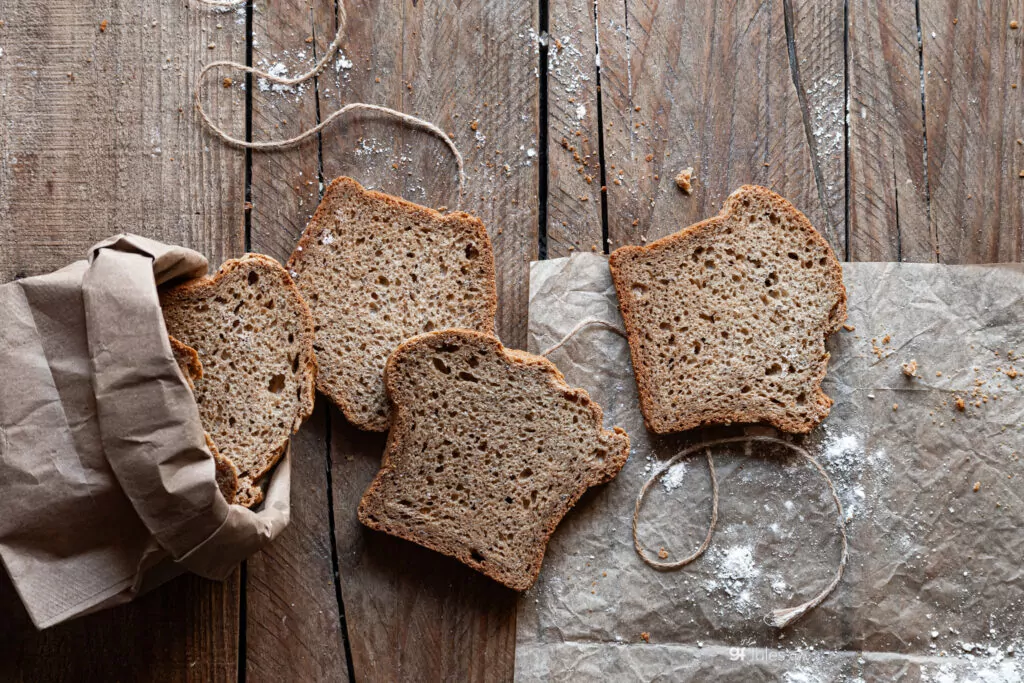
The first rule of thumb is of course to choose your gluten free ingredients wisely, as without this strong foundation, no gluten free bread will be the soft, fluffy, non-sinking loaf we all desire.
My gfJules Gluten Free All Purpose Flour is an excellent choice for all sorts of from-scratch bread baking, my corn-free Multigrain Flour also makes a beautiful loaf of bread, as does my grain-free Nada Flour, but my gfJules Gluten Free Bread Mix is the easiest way to get to bread baking nirvana.
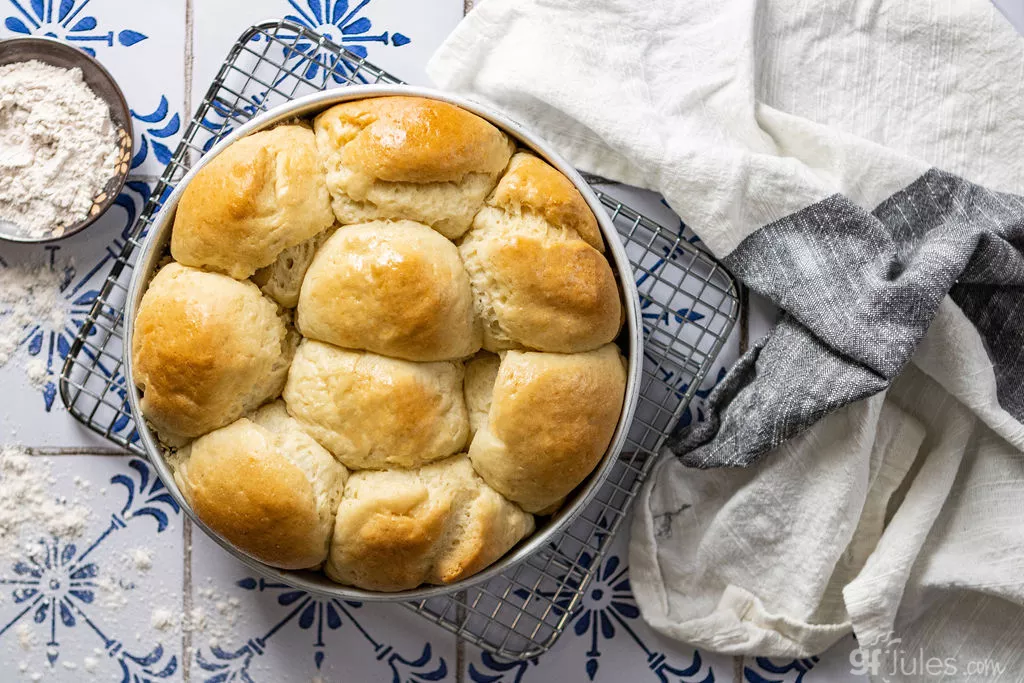
For my tips on baking gluten-free bread in a bread maker, hop to my article here.
For my review of over 10 different gluten free bread makers, hop here.

18 Tips for Gluten Free Bread Baking
1. Don’t scoop flour!
When measuring flour, don’t scoop from the bag with your measuring cup. This can compress the flour — up to 25%! Use a spoon to scoop flour into the measuring cup and level off with a knife instead. Here’s how to measure your gluten free flour properly.
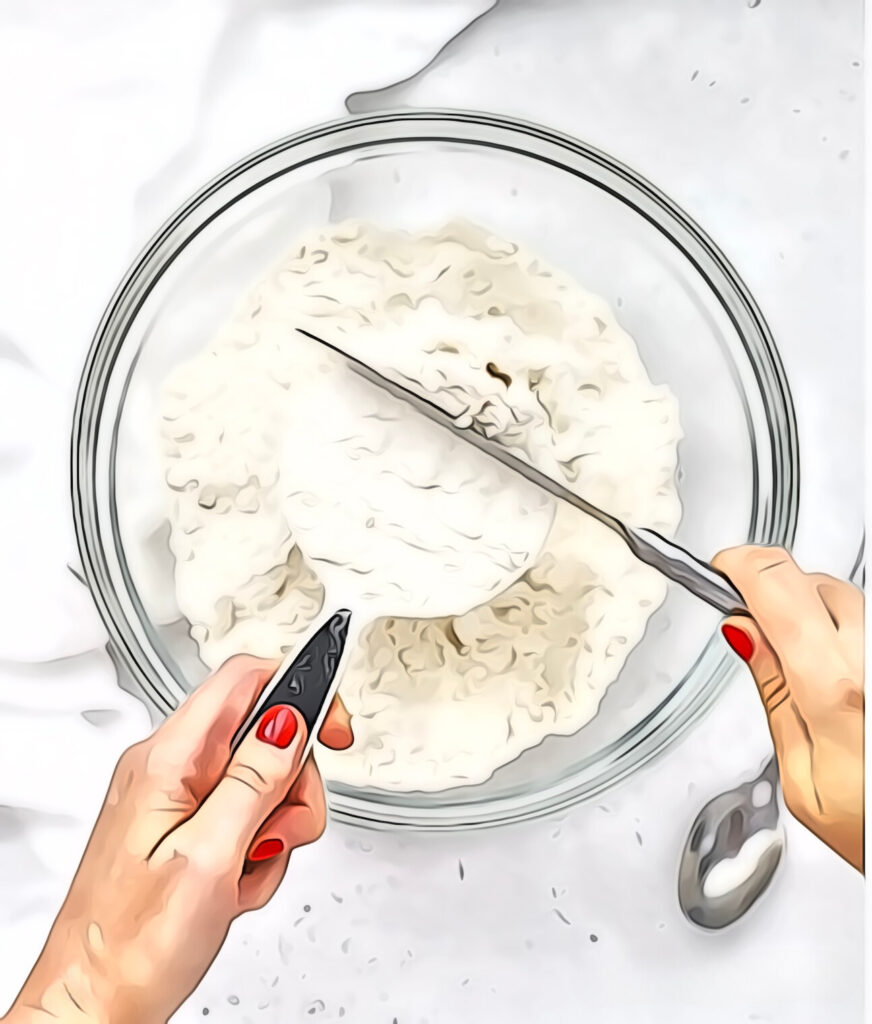
2. Weigh your ingredients.
One step better is to weigh your flour. My gfJules™ All Purpose Gluten Free Flour weighs 135 grams per cup. gfJules Corn-Free Multigrain Biscuit & Breakfast Baking Flour weighs 140 grams per cup. gfJules Nada Flour weighs 110 grams per cup. Make sure you know what the flour you’re using weighs, and if the recipe calls for gram weights as well as cups, go with the proper gram weight per cup of the flour you’re using.
Measuring by weight will ensure that you have the correct amount of flour in any recipe.
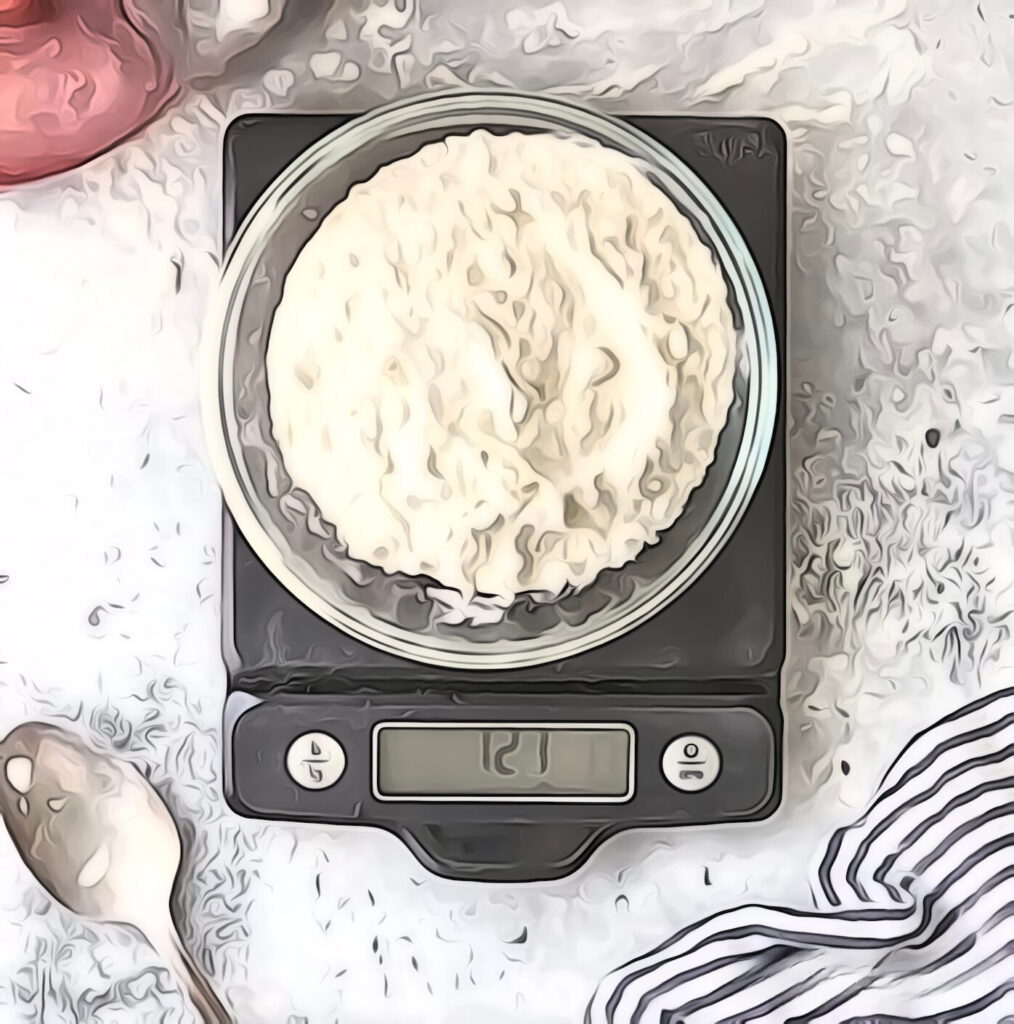
Even 1/2 cup of flour can make a huge difference in the results you get with any recipe. It’s not enough to just use any gluten free flour you choose; gluten free flours aren’t necessarily interchangeable. Follow the flours recommended for each given recipe to get the results promised.
3. Room temperature ingredients make a huge difference!
It is particularly important for yeast recipes that you bring all of your ingredients, such as eggs, to room temperature before adding them together to make bread.
Yeast needs warmth to grow and if your ingredients are too cold, it may prevent full yeast growth. Don’t make your wet ingredients too hot though, just nice and warm, the way yeast likes it! The ideal temperature for yeast to activate is around 100F/38C.
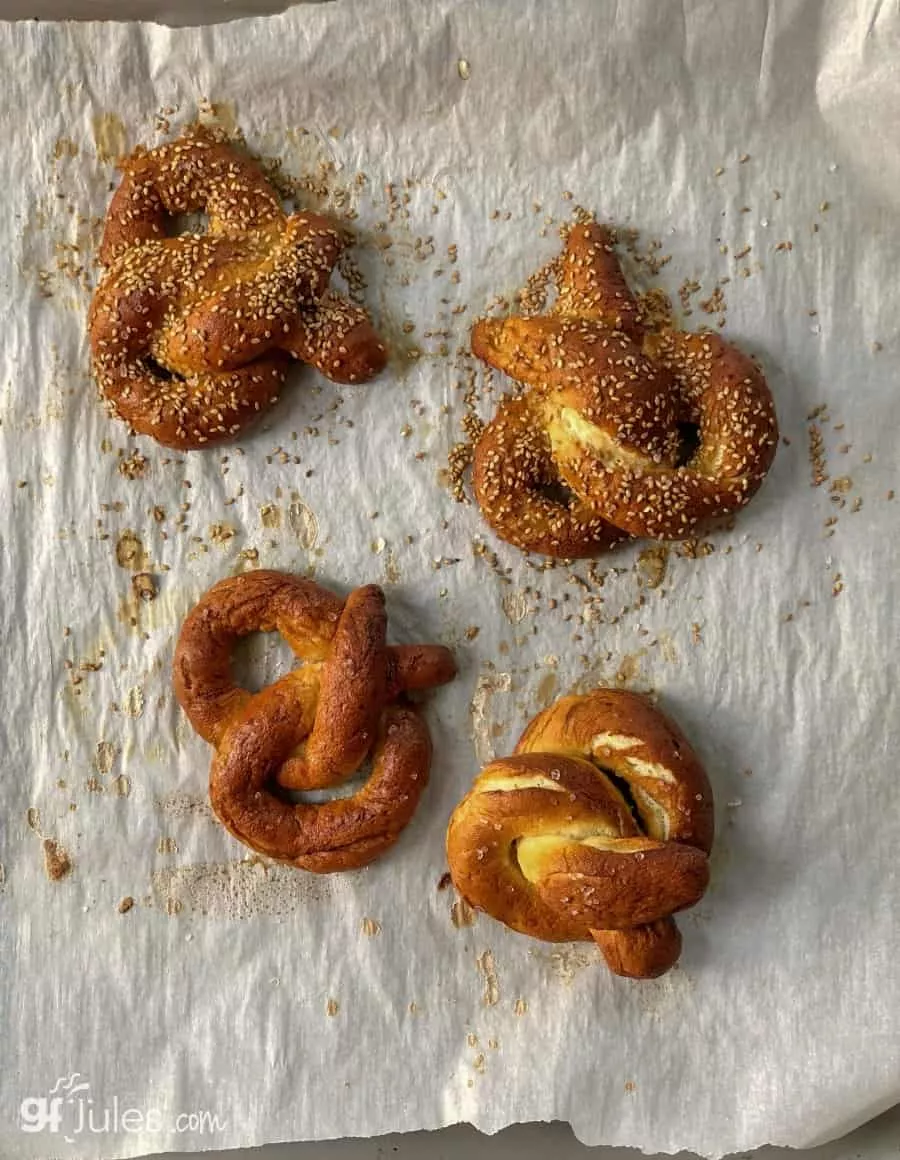
4. When baking gluten free bread, don’t follow directions (for wheat bread).
It is essential when converting wheat-based bread recipes to gluten-free, that you not follow the directions. That’s right! Break all the wheat/gluten dough rules when baking gluten-free bread! Any kneading beyond simply mixing the dough well, and any punching down of the gluten-free dough will punch the risen life right out of it. Those steps are designed to “exercise the gluten” and make it more elastic.
We have no gluten in our recipes, so nothing to exercise, and more than that, these steps will actually cause your gluten-free recipe to fail! It is for this reason that I counsel people when first attempting to make gluten-free breads, to follow a gluten-free bread recipe or two, just to get the hang of it. If you are an accomplished bread baker, it may feel weird for you to abandon these techniques, but trust me, you must!

5. Shape gluten free breads before rising.
Because our gluten free breads have no rise and punch down and second rise and punch down … you’ll want to shape any breads before the rise (they’ll only rise once!).
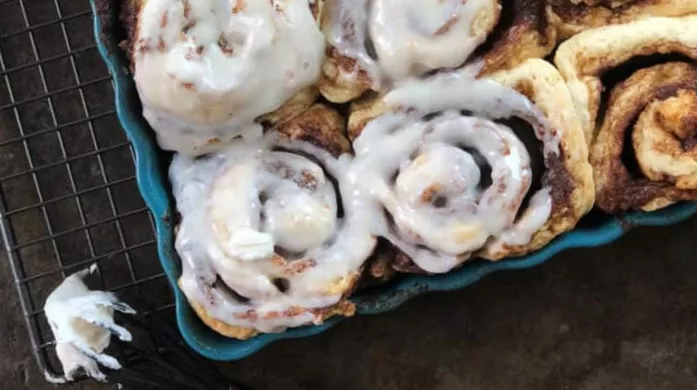
Dinner rolls should rise in the shape or tin you would like them to bake in; bread sticks should be formed before rising; cinnamon rolls should rise in their pans; challah must be braided and then allowed to rise. Don’t mess with gluten-free dough once it has risen, just bake it!
6. High altitude can change the way yeast doughs behave.
Have a look at my High Altitude GF Cooking Tips.
7. Take your gluten free bread’s temperature.
It is very important not to take your bread out of the oven before it is fully cooked. If the bread has a rubbery layer at the bottom, this usually means it was not fully cooked. The best way to tell if the bread is done is to insert an instant read thermometer all the way to the bottom of the loaf (but not touching the pan). The temperature should be approximately 205-210º F when it is done. Your bread should keep its shape when it is completely baked. Internal thermometers are available in my shop.
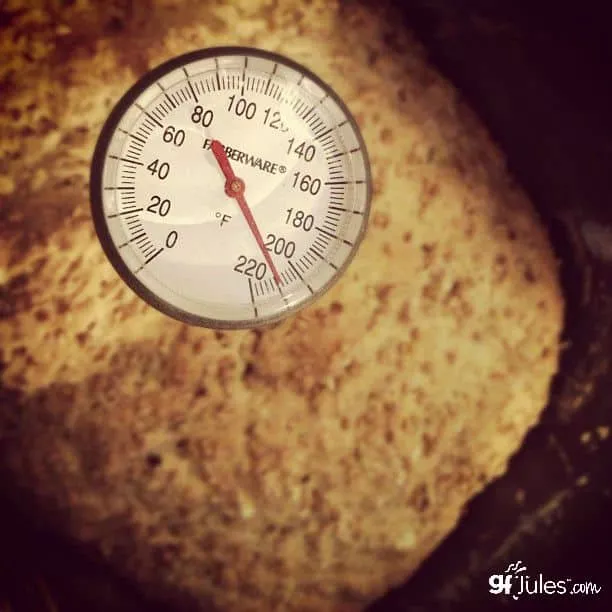
8. Change your bread pan.
Metal pans tend to work better than glass for fully cooking a loaf of bread. Metal pans do not have to be fancy or expensive. Most of my bread recipes work best in 9 x 5 pans, as they are larger volume breads. Stoneware or ceramic pans also bake well.
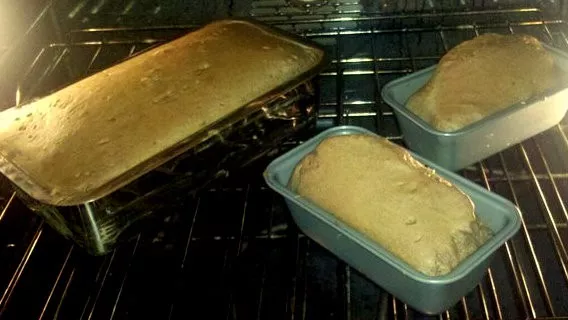
If you’re having trouble with your bread bakes, switch out the pan size or material and see if that makes a difference.
9. Make sure your rising spot is nice and warm.
A great method for letting your yeast breads rise before baking is to turn on your oven to 200º F, then turn it off when it has reached temperature.
Put your un-raised bread into the warmed oven with an oiled piece of parchment on top and a bowl of water in the oven with it, then let it rise according to directions. Once raised, remove the parchment and bake according to directions.
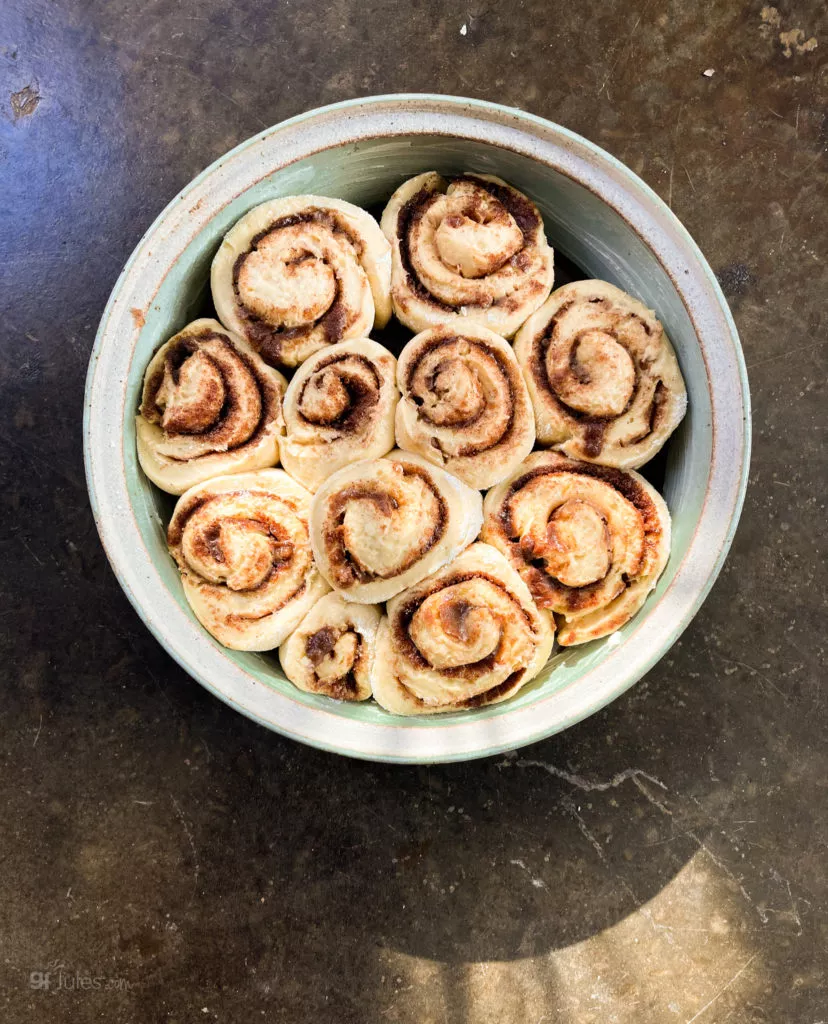
10. Find the perfect rise time and place.
The longer you can let your bread rise, the better it will taste and the less likely it will be to collapse … to a point. A good rule of thumb is to let the bread rise to the top of your pan before baking; a slower, cooler rise to that level will produce a better loaf, so make sure it isn’t rising in too warm of a spot.
If you can let the gluten free bread dough rise overnight in a cool — not warm — place, the slower rise will provide a stronger cell structure and more of a sourdough flavor when baked the next day. A refrigerated overnight rise is a great way to get a longer proof without weakening the bread’s structure.
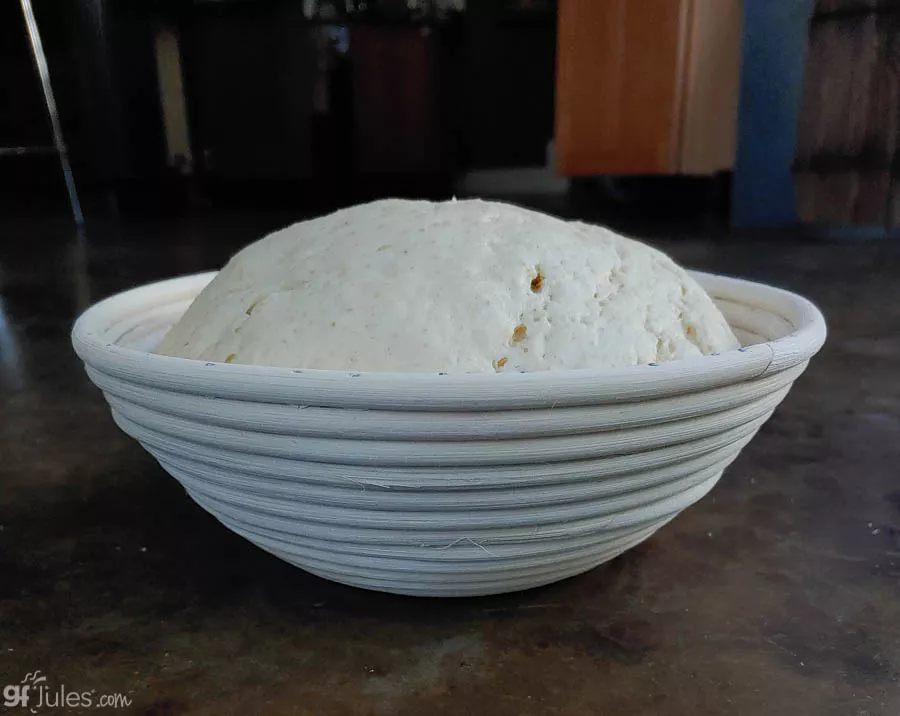
11. Proof your yeast properly.
“Proofed” yeast should look like this. If not, throw it out and start with fresh yeast. (Here’s lots more info on baking with yeast, if you’re interested!)
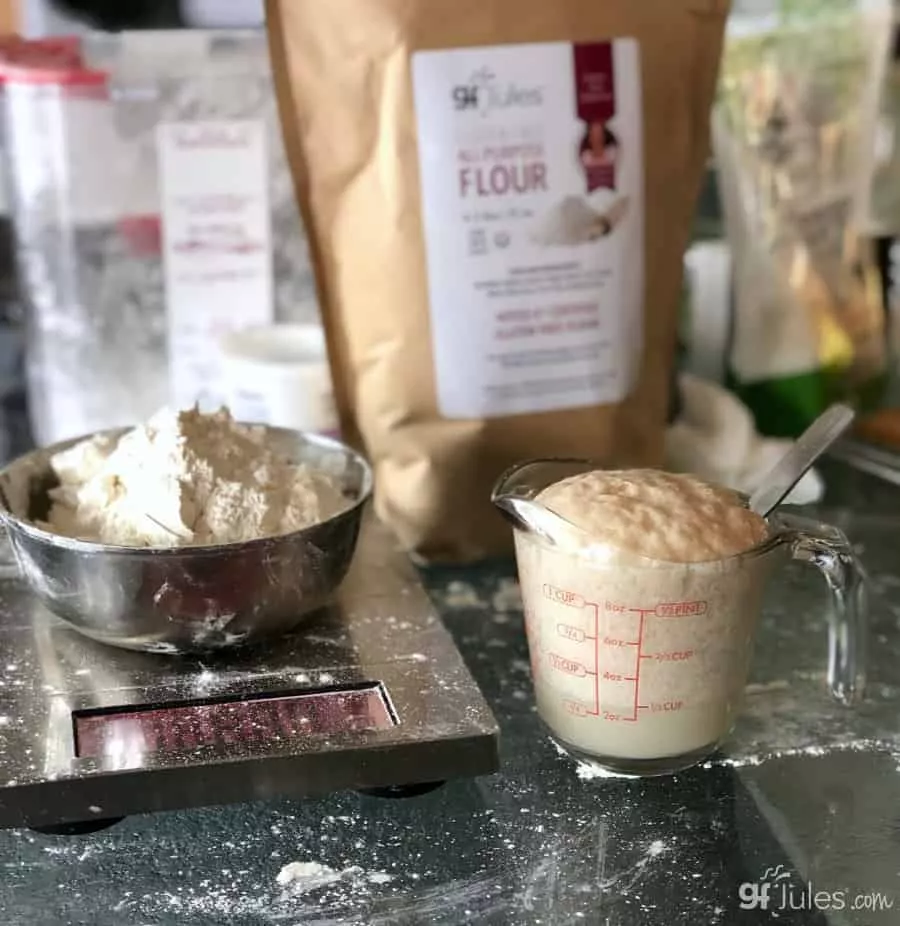
If you’re still having issues with getting your yeast breads to rise, try “proofing” your yeast first. I prefer using “Quick Rise” or “Rapid Rise” yeast for gluten-free yeast breads, but those kinds of yeast should not be proofed — simply add those with your dry ingredients. If you want to try proofing the yeast before adding to the recipe, use regular Active Dry Yeast instead.
Place the yeast in a bowl with the liquid called for in the recipe (water, milk, etc.), but make sure it’s warm. If you can add a teaspoon of sugar, that’s helpful. Whisk it gently and let it sit for 5 minutes. If it’s starting to have that familiar yeasty smell, foam up and swell, it’s good and you can add it to your recipe; if it’s stagnating and not getting foamy or rising, throw it out.
12. Check ingredient integrity.
Yeast can go bad, as can baking soda and baking powder. Sometimes the problem is your ingredients, not you. What a relief, right?
So, how often do you need to replace baking powder and baking soda? As long as the expiration date on each product hasn’t passed, opened cans of baking powder should be used within 3-6 months; opened containers of baking soda should be used within 6 months. I err on the more conservative side of 3 months, and if my baking soda has clumps, I open a new container. Who wants to ruin a recipe just because the leaveners aren’t active enough?
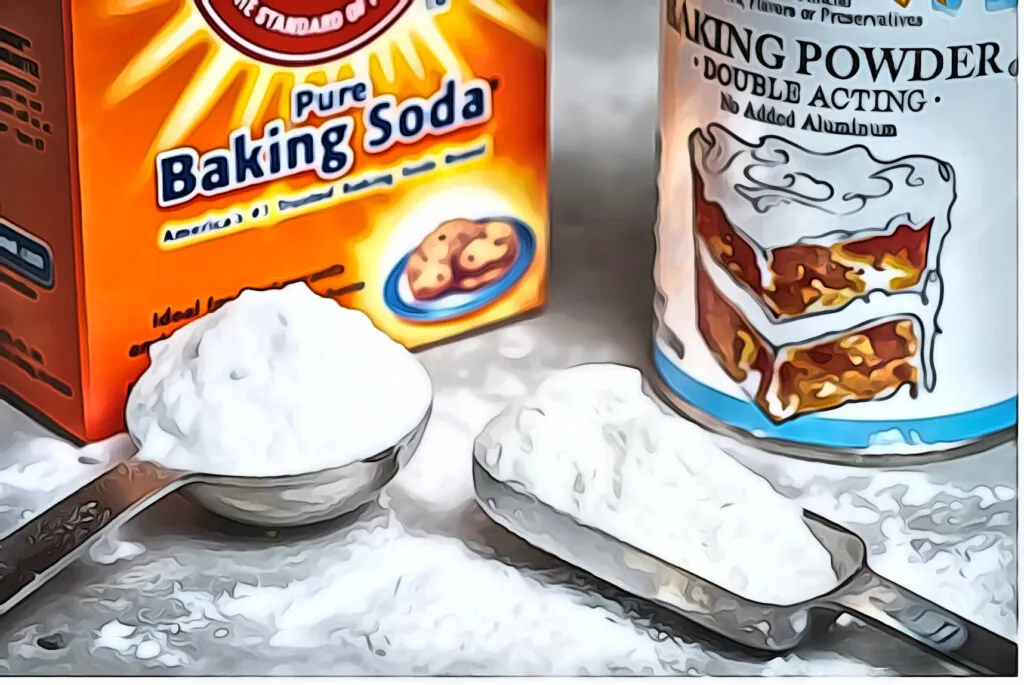
To test whether your leaveners are still active:
How Do I Test Baking Soda?
- Spoon a small amount of baking soda into a bowl
- Add a few drops of lemon juice or vinegar
How Do I Test Baking Powder?
- Spoon a small amount of baking powder into a bowl
- Add hot water
If the mixture fizzes quickly, the baking soda or baking powder will still work well in your recipe. If not, replace it with a fresh container. Use the old box of baking soda in your refrigerator as a deodorizer!
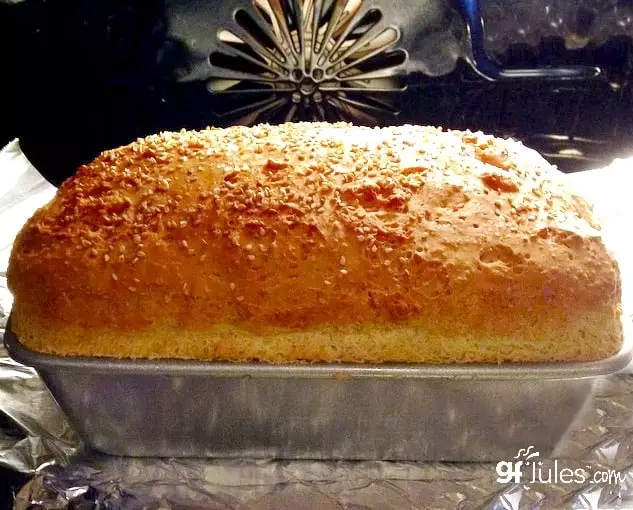
13. Cool bread slowly.
When your bread is done cooking, turn off the oven and open the door so that the bread can cool slowly. Taking the bread out of a hot oven and quickly transferring it to a cool counter can sometimes cause the loaf to sink in.
If it still sinks, it may have too much moisture to support itself fully. It should still taste great, but if you have your heart set on a nice crowned loaf, next time try cutting back on the liquid a bit in that recipe or adding 1/4 cup of flaxseed meal to help support the bread’s structure and enhance its nutritional value, all in one! Altitude and even the day’s weather can affect sometimes-picky yeast recipes.
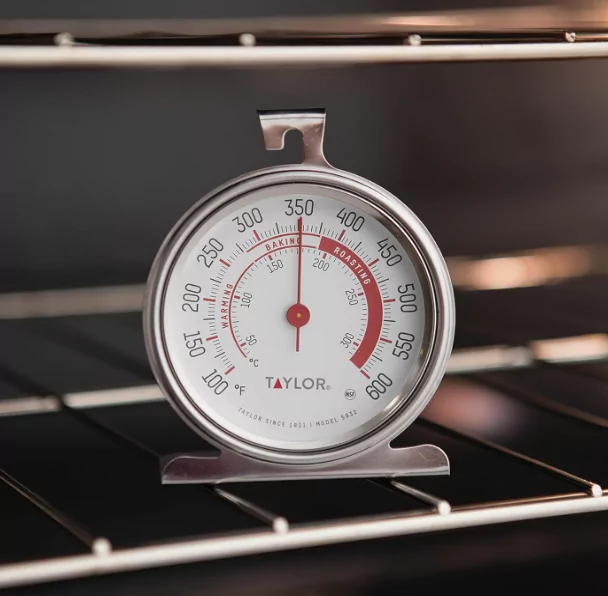
14. Calibrate your oven temperature.
Oven temperatures are frequently off by as little as 25 degrees and it can make a big difference in something as finicky as a yeast bread. Invest in an oven thermometer (they’re less than $10) and adjust your oven’s temperature so your bread will bake comfortably, at the temperature it likes. Here’s how to calibrate your oven without having to call an appliance repair service!
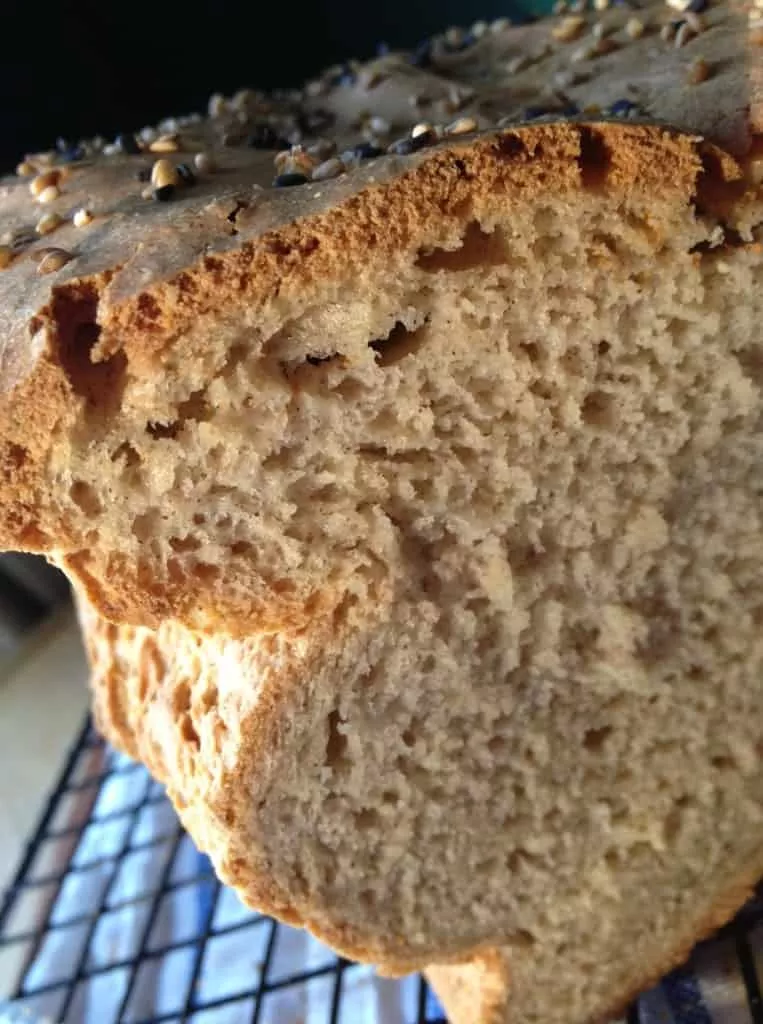
15. Bubbles add air (duh, right?).
It’s amazing what adding bubbles can do for the lift in your bread loaf! Try the same amount of gluten-free beer, ginger ale, 7-Up, Perrier … you get the picture. Room temperature, of course, and measured appropriately (let the bubbles settle for accurate measurements). Check out this gorgeous gluten-free beer bread!
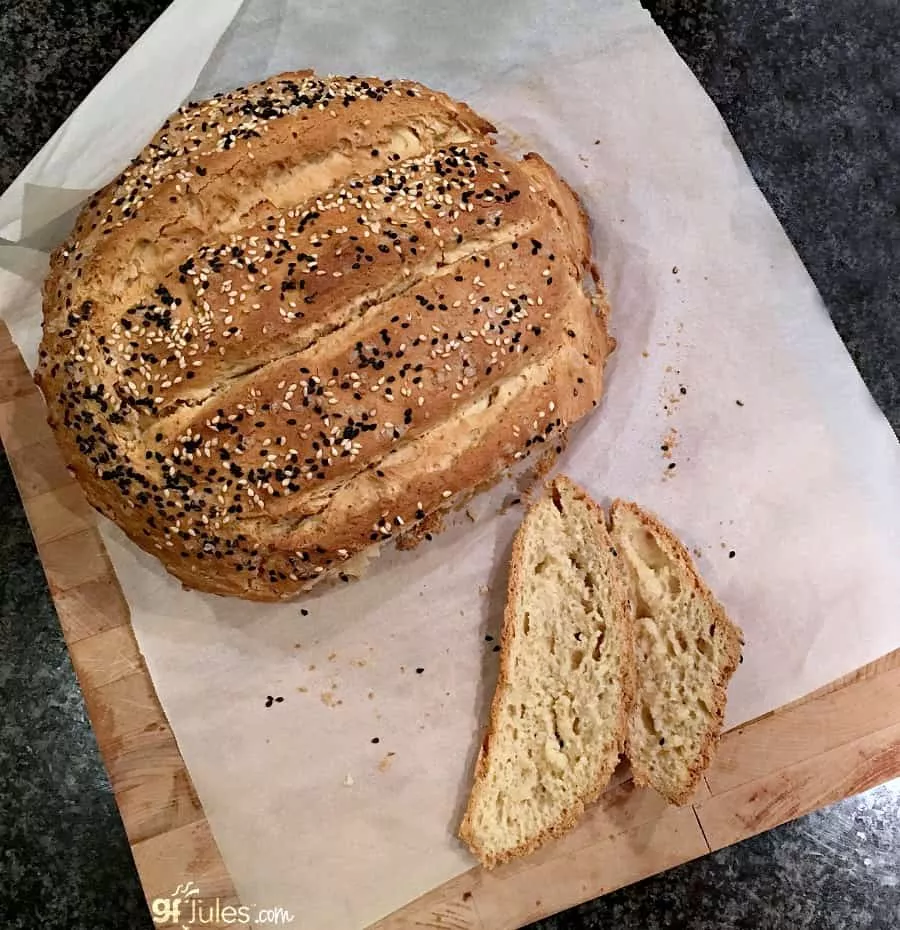
16. Fixing that rubbery bottom.
If you still wind up with a rubbery bottom on your loaf, there are a few things that could have gone wrong.
First, you might have over-beaten the dough. Unlike gluten doughs, gluten-free bread doughs should not be overworked, and doing so can sometimes make them a bit rubbery. Remember NOT TO PUNCH DOWN GLUTEN FREE DOUGHS.
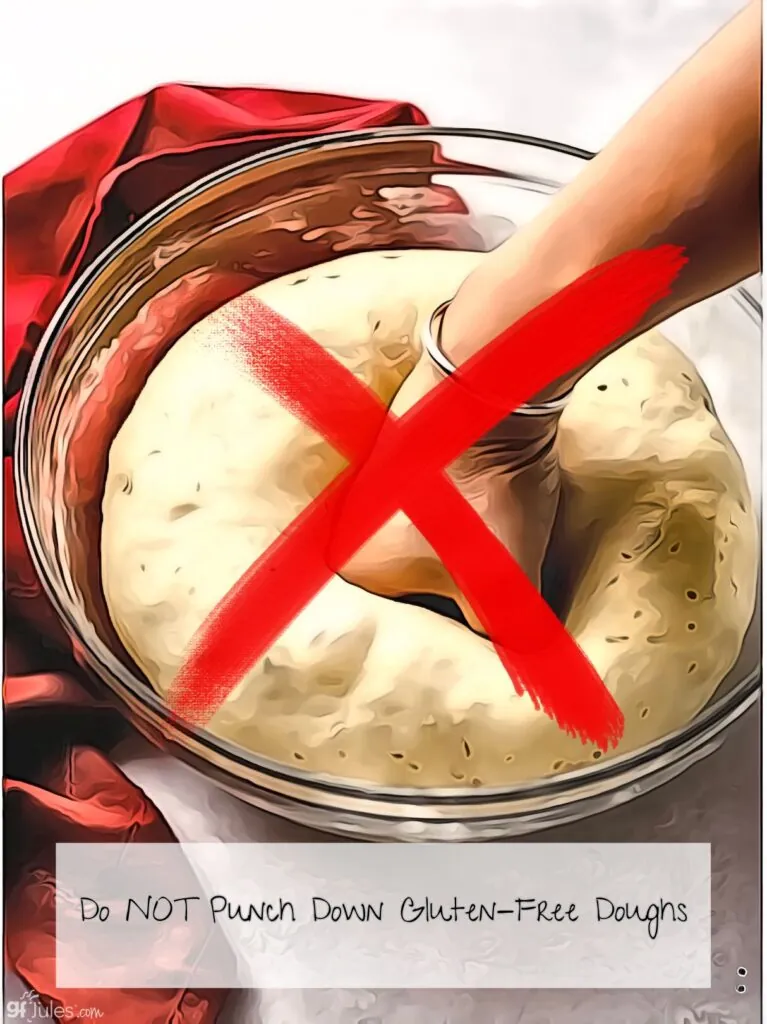
Second, if you are baking from scratch and adding your own xanthan or guar gum, you might have added too much. Find out more about baking with gums in this post.
Third, there might be too much liquid in your recipe, all settling at the bottom and not baking off, while also weighing down the dough. Fourth, the loaf might not have baked all the way. If the top is baked and getting a nice crust, but the bottom isn’t all the way done, cover the loaf with foil and keep baking!
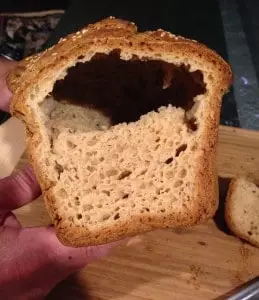
17. Where your loaf is baking also makes a difference.
Too close to the top of the oven, and the top will bake much more quickly than the rest of the bread, causing a split in the loaf. That’s quite a chasm, all because the bread rose so high that it nearly touched the oven’s heating element (and heat rises, don’t forget!). The rack of the oven shouldn’t be so high that the crust is that close to the heating element.
Convection bake settings also help with this, as convection keeps the temperature in the whole oven more consistent. Side note: also be sure there’s not an oven rack above the one on which your bread is baking – you don’t want the bread to rise during the bake and bump into the bottom of another rack!
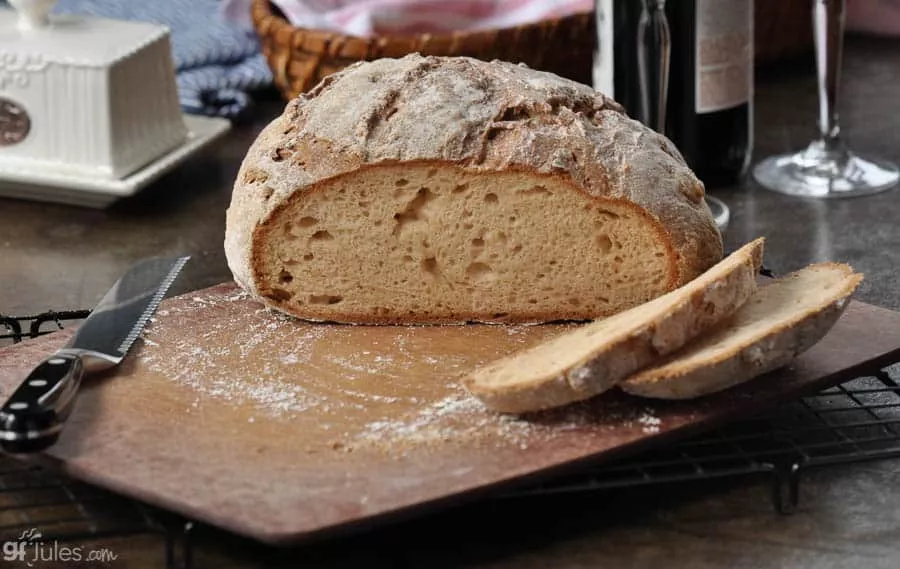
18. You don’t even need a bread pan to make great gluten free bread!
Try making a gluten free artisan loaf on a parchment-lined baking sheet, or baking in a springform or tall-sided oven-safe bowl or pan. Or even use muffin cups or popover trays! Your bread will be yummy no matter how you bake it, if you use the right ingredients!

(Ok, I guess there were more than a couple things …!)
Remember that the gluten free flours you choose ultimately make all the difference, so choose wisely. Then implement these 18 tips for best gluten free bread baking success!
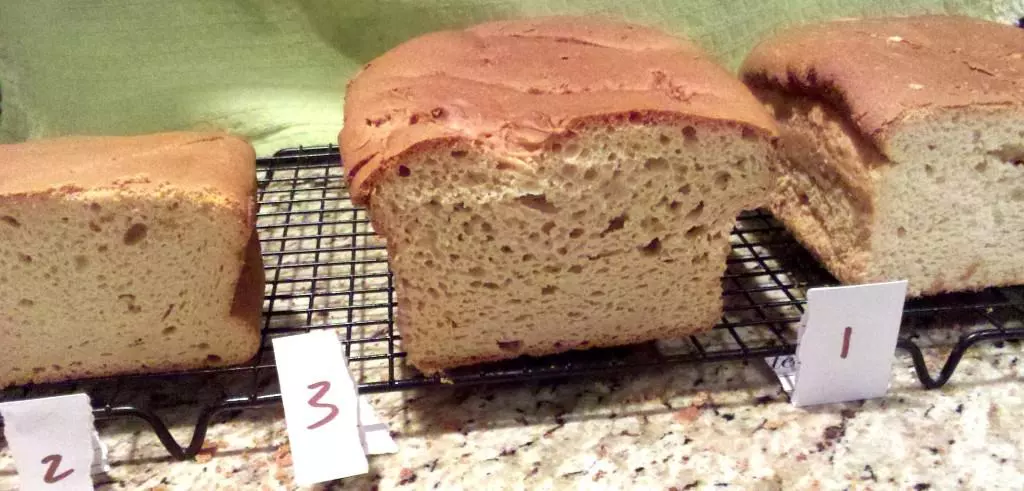
*Note: If you purchase one of these items after following my link, I may receive a small commission, at no additional cost to you, which I use to pay for web design, hosting and services for this blog.
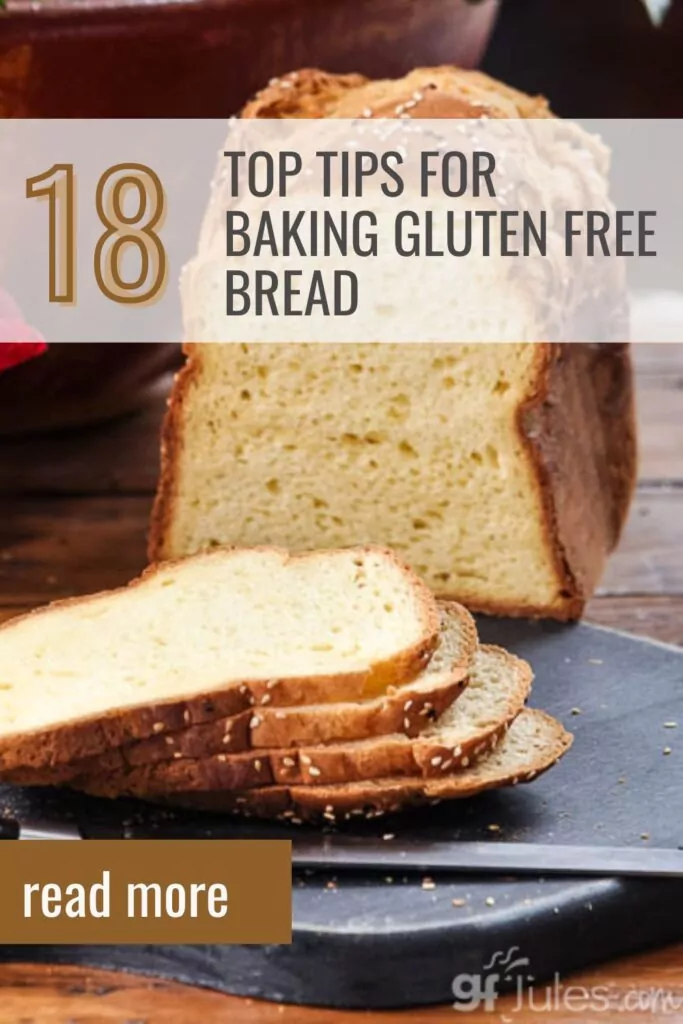
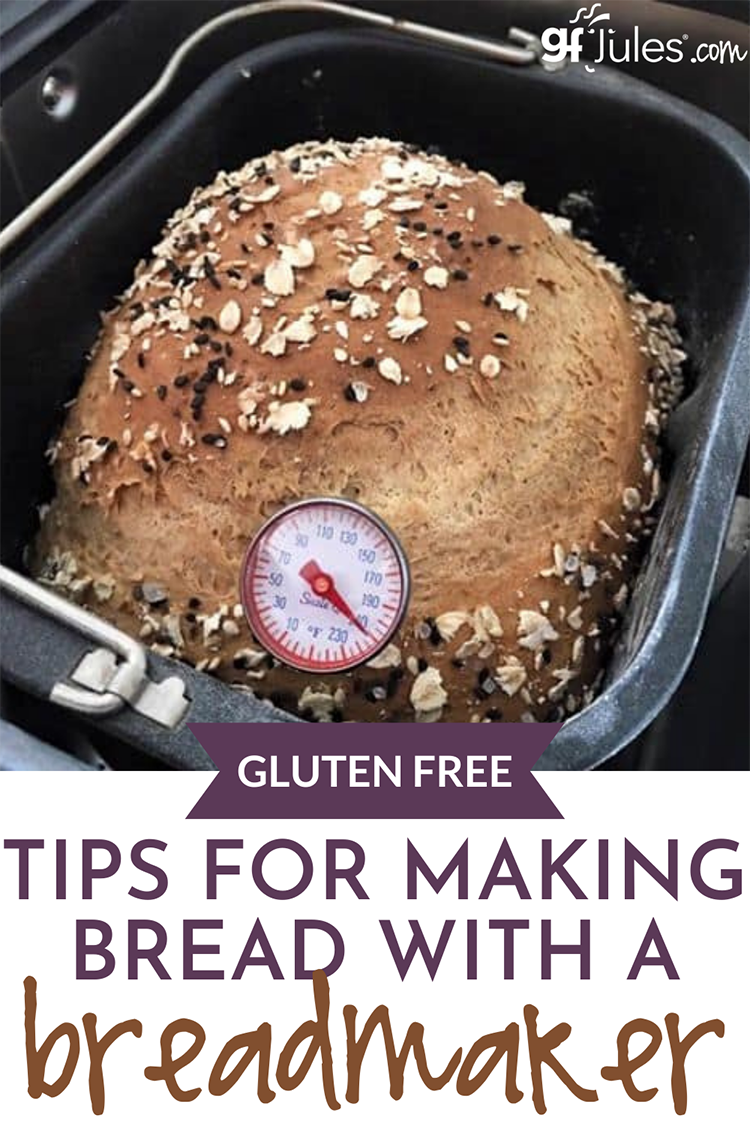




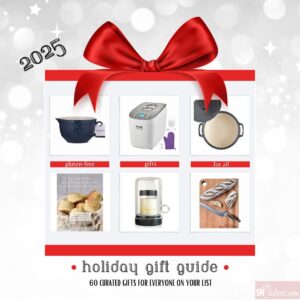
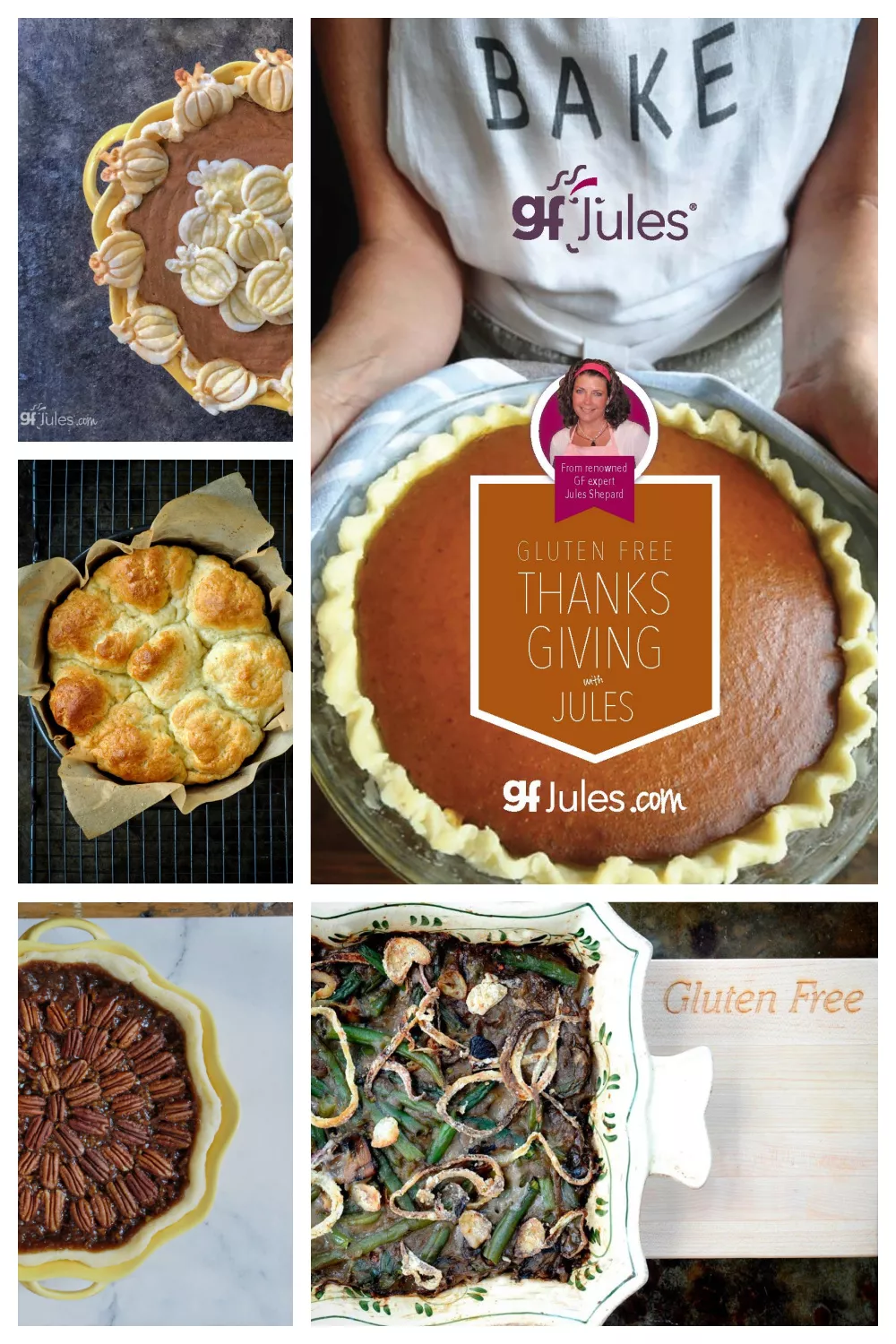


 (25 votes, average: 3.84 out of 5)
(25 votes, average: 3.84 out of 5)
















Hi. Can all of your bread recipes be done in a bread machine? Thanks.
Hi Teri, yes, any of my bread recipes can be made in a bread maker, but braided or shaped breads like challah need to be baked in an oven. Hope that helps!
Not sure if anyone can help me. I am pretty good at mixing the dough correctly. I am using a muffin top pan and trying to make sandwich rolls. They seem to rise beautifully, but at some point it seems as the CO2 bubbles are popping at the surface. If i mix it too dry they dont rise and turn out like bricks. Too much moisture and the gas just bubbles out of the dough/batter. Is there anything I can brush them with that will help put a, for lack of a better term elastic skin on it that would keep the outside sealed and not let the gas from the yeast escape? I understand the differences between the different gums and other additives to try and add structure, but I still have not found a combination that works. Yet!
Hi Howard, interesting problem you’re describing. I’m not sure what could be causing what you describe. I understand overmixing leads to brick-like breads, but the escape of bubbles through the batter? That’s a new one on me. You could certainly brush them with egg wash which would help to put a “skin” on them, as you say, but if they rise slowly enough before baking, there shouldn’t be such a problem. Have you tried letting them rise for at least an hour (maybe even overnight in the fridge, covered) before baking? Have you tried any of my recipes with ingredients specified, since I haven’t had that problem with mine. Just a thought. I hope this helps!
~jules
I was wondering what I might have done wrong that would cause my loaf to get very soft and fall over the sides of the pan when it was rising? Any ideas? Thanks!
Hi Susan, there could be several things at work here. First, it sounds like the rising location might have been too warm, causing it to rise quickly, and then collapse. Secondly, your dough could be a bit too wet – revisit the ingredients to see if you need to cut back on the liquid a bit. Also, it might have actually risen too long. My rule of thumb is to bake the loaf once it has risen to the top of the pan, because once it’s taller than the pan sides, there’s nothing to support the rising loaf and it will fall. Let me know how it goes next time you bake bread!
Thanks so much! After retracing my steps I do believe that it did rise to long. I am not about to give up!
So glad you have the right attitude about baking and trying again, Susan! Let me know how it goes!
Jules…a great and helpful site, thanks! I hope you can help me with my bread. It seems that no matter what I add (incl. psyllium, baking powder, vinegar, gelatin, flax meal, whipped egg whites) and cooking for a full hour in a verified 350F oven, I get a nice loaf that doesn’t fall BUT is always sticky after cooling. I’ve been using Pamela’s bread mix along with 50g of Bob’s AP flour and 50g lite buckwheat. Can you see where I’ve gone wrong?
Hi Pat, how do you mean “sticky”? Is it gummy or sticks to the pan or isn’t cooked thoroughly, or what? Can you give me a little more info? Thanks!!
Jules, I used your bread mix with a bread machine. Followed recipe to a T. Checked temp and bread was done. The bread was very crumby. Would adding an extra egg or extra yogurt to the recipe help with this?? Otherwise the bread was great! Thanks!
Hi Beth – not sure why the bread would have been crumby — that’s quite odd indeed! What did you use for the main wet ingredient (yogurt, milk, GF beer, gingerale, …?) If you used yogurt, next time I’d suggest trying a different wet ingredient from the ones I have listed (use any in equal proportion). Adding more yogurt will make the bread too heavy and I’m not sure you’d like the results. The only other thing I’d suggest is that if they bread was indeed crumby, it might have actually been OVER-cooked. Glad you liked the taste, regardless. It’s worth experimenting — let me know what you work out and send us an email anytime at Support@JulesGlutenFree.com if you want us to walk through recipes or using mixes with you to see if we can help more directly that way!
I’ve just been cooking gluten free for a couple of weeks now, post biopsies, and have been reading a lot about baking gluten free bread. I bought some GF flatbread (like pita) that is good, so I’ve got a target to shoot at. And I baked a loaf of Bob’s Red Mill “Hearty Whole Grain Bread”, which turned out well and is good enough to eat just by itself. But it wouldn’t do for pizza crust. In the last year or so I’d been baking a “no-knead” pizza crust that finally satisfied me (I’d been experimenting for years with pizza crust), and one of the things that made it good was a slow rise overnight in the refrigerator.
I’ve seen quite a few GF yeast bread recipes, but I’ve missed seeing anything about slow, overnight rise. Is this feasible with GF dough? It really improves a wheat-based dough, but I’m wondering if it involves something with the gluten that would not make a difference when baking GF. Any guidance/advice would be appreciated.
Hi Dick, you ask a great question. I met a commercial baker out in California a few years ago when we were both speaking at a conference, and he told me that he was baking breads that he let rise for 3 days in the refrigerator before he baked them. He swore they tasted better that way! I like to let my breads rise slowly, and for as long as possible before baking because it helps with cell structure, but I can’t say I ever have the patience to wait that long! I usually let mine rise 1-3 hours and they bake up just fine. I recommend you do some experimenting and see what works for you. If you have the time and the patience, let a loaf rise overnight in the refrigerator and then rise in a warm location for a few hours first. Keep me posted on your experiments!
Jules,
I tried to make the challah recipe you provide in your book. I used your all purpose flour, weighed rather than measured the flour, and made the dough in the bread machine. The finished product was absolutely delicious both in taste and texture but the dough was the consistency of batter and it was impossible to try to braid it into loaf. I was going to add flour to try to work with it but it would have taken sooo much flour that I was afraid that I’d spoil the product if I tried. I ended up making 24 “muffins”. I’d much rather have it taste good than look good but obviously, looking good would be nice. Any ideas of how I can thicken up the dough so that I can braid it without altering the finished taste or texture?
Thanks!
Hi Pam, I’m so glad you loved the challah taste and texture – it’s a favorite in my house (year-round!). When you say that you weighed instead of measuring my flour, what weight were you assigning 1 cup of my flour? When I bake by weight, I weigh 1 cup of my flour to 135gr. Perhaps that’s where this was off? The dough is wet, but I scoop it out onto a pat with plenty more of my flour and I break off pieces of the dough for braids and roll each of those in the flour to help me to roll them out well. I don’t have trouble once I do that. Hopefully it will be less sticky for you with that weight and technique. Your “muffin” idea was brilliant, though!
For all who are having trouble with their bread collapsing after removing it from the oven – I had the same problem repeatedly until I began using a little bit smaller loaf pan (8 1/2 x 4 1/2 x 2 5/8) and then letting it rise only until it was even with the top of the pan. It will finish rising when you place it in the oven to bake. I found that whenever I let it rise too much it would fall every time. Hope this helps!!
Thanks for the tip, Pam! We can all benefit from each other’s learnings!
Hi Jules I’m a new girl at GF cookery…so am seeking info on what is available.I live in Cyprus [in the Meditteranean] so am limited to what I can buy.Can you give me the name of the basic ingredient in Expandex? please as I am sure I can get something that does the same thing under another name ,but just want to be sure that I am looking at the right product…and what ratio to flour is this product used in? Regards…Jan Stevenson [the above is my blog name]
Hi Fidela, Expandex is a modified (non-GMO) tapioca starch. It doesn’t behave exactly like regular tapioca starch, as it actually extends the shelf life of baked goods and allows you to reduce the amount of gums in your blend. For a good base recipe, see my recipe published in the Washington Post. Hope that helps!
can you buy expandex?? and I have Your ” nearly normal cooking” book. But just looked at your french bread recipe on celieac.com. Can I use your all purpose flour blend mix from the book in that recipe with good results? OR do I need to buy your current APblend in a bag? thanks a bunch.
Deb
Hi Deborah, my pre-blended all purpose flour contains Expandex, which helps to naturally extend the shelf life of your baked goods and also helps to give doughs more elasticity (something that GF flours typically lack). You can use my homemade blends from my cookbooks in my French Bread Recipe, but I find that the pre-made blend works a bit better for those reasons. I’m not sure if consumers can buy Expandex directly — check on their website to see. It is not a 1:1 for wheat flour, though — you’ll need to use it in a blend. Hope this information helps!
I have a bread recipe from the Art of Gluten Free for Soft Whole Grain Sandwich Bread. It calls for a half cup of Expandex. Should I use that since your flour has it in it?
Hi Elizabeth – I’m not understanding your question, sorry! Are you asking if you should use my flour in place of Expandex in a recipe calling for Expandex?
Hi again Jules,
I figured out what I need to do to use this bread machine after all. The express cycle was going to be too short of a baking time. Once the bread had risen and baking had just begun, I reset the machine to the bake-only cycle and baked it the full hour, checking the temperature before removing it from the machine. The bread turned out as good as it had in the oven. So, I either need to use both the dough and bake settings or start with the express setting and switch to the bake setting. Not quite “set it and forget it” that I was hoping for, but less of a mess compared to cleaning up the dust from flour and all the equipment. Also, I can use it in the summer to bake bread instead of heating up the whole kitchen with the oven. I had given up the idea of making GF bread until I tried your flour. What a difference! Thank You!!
Cheryl
Cheryl that’s a wonderful work-around. My machine has been persnickety lately, and I’m still trying to get it to allow me to change course in the middle of a cycle. I’m going to try this method, rather than letting it go to the end of the bake and trying to add time (which, for some reason, it’s recently decided not to allow me to do!). Thanks for sharing your method! Oh, and I’m so glad you didn’t give up on baking GF Bread!!!
I’m so sooooo frustrated. I continue to use fresh rapid rise yeast….follow the steps for the sandwich bread, placing the liquids what I’m assuming is at room temp in the bread machine…placing dry ingredients on top that have been whisked together, then adding the yeast that has been stored in the fridge…I continue to get a loaf that doesn’t rise and comes out more like a quick bread load….it’s very delicious, but getting no rise from the yeast. I get so disappointed…I made two loaves today…same outcome…they had risen slightly, choose the rapid rise cycle and hit start. I use a spatula to mix the sides into the dough….Any help from you would be so much appreciated. All my ingredients are fresh. I understood when using the bread machine….the yeast should be the last to add in a well on made at the top of the dry ingredients….Any suggestions????????? Please help!!!
Hi Sandra,
I’m happy to try to help. From what you’re describing, you may want to try a different cycle. Using the rapid rise may not be long enough. Does your machine have a GF bread setting? If not, read the manual (or look on line for a manual if you’ve lost yours, like I always do! 🙂 ) and try to program the machine. What you want is a rest cycle (if your ingredients like yeast aren’t room temp – you mentioned your yeast is refrigerated, so it needs time to warm up), a knead/mix cycle and then a rise cycle before the bake. For my recipes, the bake usually needs to be 60 minutes, and the rise can be 30-60 minutes — the longer the better for the results you describe. Also, what liquid do you use? You should try an effervescent one next time for a better rise – something like gluten-free beer, sparkling water, gingerale … or something similar. It helps life the loaf and give you a better rise.
Try these changes (sounds like everything else you’re doing is right!) and see how it goes. In the meantime, enjoy the fact that your loaves still taste good! You could also cut them into cubes and freeze them for croutons or stuffing, or bread crumbs for future recipes! No loaf goes un-used in my house!
Keep me posted – I’m here to help!!!
~jules
Jules,
I have a Hamilton Beach Homebaker with a gluten-free setting. But the GF setting allows for 3 rises. I chose the express setting for a 2-pound loaf with dark crust for my first loaf in this machine because it allows for only one kneed and rise. I chose the dark crust so I could keep an eye on it and not have to extend the baking time. I was really disappointed to find that the GF setting was a 3-rise cycle. Would you have gone with the GF cycle anyway? I have baked your bread in the static oven with excellent results, both with your mixes and with your flour and recipe. So, I know one rise is all that is required. I may end up returning this machine in the end, but hopefully it will work since I got it on a sale. It was hard to fine a bread maker in town. Seems stores no longer carry them.
Thank you,
Cheryl
Greetings from Idaho! I’m bored to tears at work so I decided to browse your site on my iphone during lunch break. I love the information you present here and can’t wait to take a look when I get home.
I’m surprised at how fast your blog loaded on my mobile .. I’m
not even using WIFI, just 3G .. Anyways, good site!
Hi Jules
I’ve been making gluten free bread for a while now…and am having some issues.
I live at 3500ft so I do lengthen the baking time.
The top of the bread is rising away from the bottom portion leaving a huge pocket of air inside the bread. It tastes lovely but makes the slices smaller as the top part breaks free when sliced.
Any suggestions?
Also – sometimes the left side of the bread rises higher than the right…which also makes slicing difficult. Would the oven light affect the rise while baking?
Thanks,
Samantha
Hi Samantha, thanks for writing. If your bread has large air pockets, it might not be rising long enough or may be that you’re using a touch too much yeast. Try both and see if either helps you. You might also try covering your bread loosely with foil (like a tent). Regarding lop-sided rising, the issue is definitely with your oven or oven light. Believe it or not, the light does throw heat, so turn your bread half-way during the rise so that it is more evenly exposed to the heat. Hope these ideas help!
Hello Jules,
My husband was recently diagnosed with dairy a allergy and there is a history of celiac, so we decided to go gluten free.
We just made our first loaf of bread (your recipe) today in our bread maker, it is delicious! It did sink slightly but overall lovely.
Will certainly try your other recipes.
Thank you,
D&R in Illinois
Hi Dolores – sounds like a smart thing to do, given his history. So glad you found my blog! And glad you made the bread and are enjoying it. Have fun trying my recipes and let me know if you ever have questions or need other recipes you can’t find. Welcome to the Jules Family!
You’ve covered bread sinking after it has been removed from the oven too early, but would cause the bread to sink while baking? I had a good rise on the bread before baking, but by the time the baking was done, the bread was flat and a brick! Any ideas?
Thanks,
Annie
Hi Annie – that is certainly frustrating to have a beautiful looking loaf collapse! Why don’t you send an email to support@julesglutenfree.com so we can walk through all the possibilities with you? The recipe, ingredients, altitude, temperature of ingredients, type of yeast … there are many variables and it would be easier to help you with an email exchange to get to the bottom of it.
Hi Jules, I bought an oven thermometer to test my oven temperature. Here’s what I found out: my oven takes longer to preheat than the oven timer says, and the sides of my oven are 25 degrees cooler than the desired temperature, but the middle is correct. That would make sense why my muffins and cupcakes tend to sink since I cook them side by side. Any thoughts on how to deal with this since my oven is correct in the middle but not the sides?
Also, the muffins I make are usually pumpkin which are pretty heavy, what do you suggest I don’t put as much in: pumpkin, milk, or apple sauce? Thanks for all your insight, it’s been very helpful!
Laura
Hi Jules, this isn’t quite the right place for this question, but I couldn’t find the right one… I have a really hard time with cupcakes and muffins sinking. Do you have any tips for that? They look great coming out of the oven, but within a minute they are flat. Of course they taste good, but are all then heavy. I always use your flour with any recipe I have. Thanks!
Laura
Hi Laura, no worries on where to ask the question! If your cupcakes are sinking, it would typically be one of two, or possibly both, things: either there is too much liquid in the recipe, or they are not cooking long enough. Have you checked to see that your oven is baking at an accurate temperature? I was surprised when I put an oven thermometer into my oven, that it was not baking accurately (but that explained a few things, though!). I would start there, and perhaps cook them a bit longer, as well. (Since you say that it happens with all muffins and cupcakes, I would suspect that is the problem, rather than the moisture, but you can try that as well.) Make sure to stick a toothpick all the way to the bottom of the cupcakes to see that they are done before taking them out of the oven. With muffins — many of which have fruit like bananas or zucchini in them — it is easy to use too much moisture and that causes sinking, as well. I hope these tips help! Let me know how your experimenting goes!
I have 2 of Jules recipe books and they both have recipes for the flour mix – but they are different. Which one should I use?
Thank you –
Tracy Atack
Tracy – it’s all about proportions when blending GF flour. Free for All Cooking, my most recent GF Cookbook, has a recipe for a flour blend that offers many different options for each ingredient, in case you don’t have one on hand or cannot use a particular ingredient. I find that recipe to be helpful to more people, but you can use either flour recipe with my recipes and when subbing for regular wheat flour in wheat flour recipes.